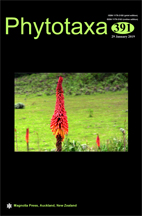Abstract
The generic or subgeneric delimitation by morphology of the Entolomataceae (Agaricales, Basidiomycota) is often based on the habit and external features of the basidiomata, the hyphal arrangement of the pileus surface and the shape of the basidiospores, which possess either bumps or undulate-pustules forming short ridges, or longitudinal ridges or are obviously angular with four to nine angles in profile view. Here, we examine the basidiospore shape of species in the /Entoloma clade described as cuboid to evaluate its importance in taxonomy using both phylogenetic and detailed analyses of the shape with Scanning Electron Microscopy. Our phylogenetic analyses support the placement of species with cuboid basidiospores into one of two clades. Based on this separation, two new subgenera of Entoloma are proposed: Cuboeccilia with an omphalinoid habit and fusoid cystidia and Cubospora which has a mycenoid to tricholomatoid habit and clavate, rarely fusoid cheilocystidia.

